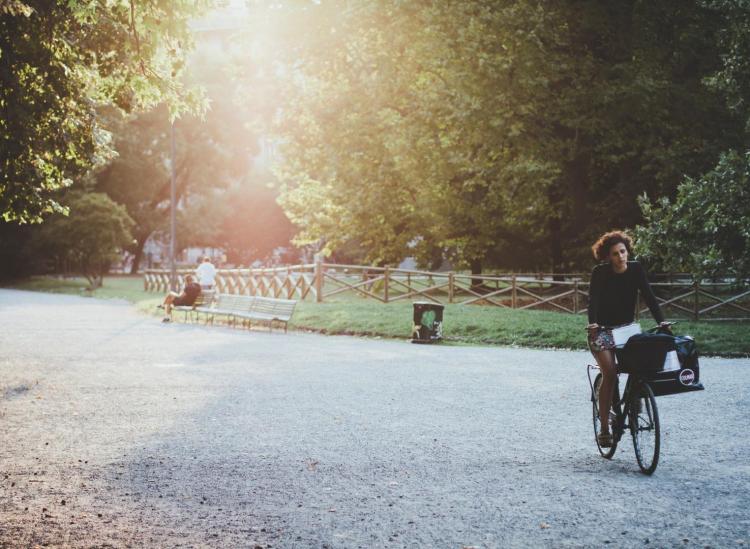5 U.S. Cities That Are Working To Improve Their Environmental Health In 2018

Unsplash/Fritz Bielmeier
When we get to thinking about the greenest cities in the United States, Denver, Portland and Seatless typically top our mental lists. But what about all of the other cities that didn’t sprint out of the sustainability gate initially, but are now making major moves? We’re all about seeing progress as we kick off a new year, and there are several unassuming cities across the country making big waves in terms of their environmental impact. Check out the five U.S. cities below that have been working diligently to be kinder to the natural world they rely on and are finally seeing serious fruits of their labor.
1. Phoenix, Arizona
Phoenix typically doesn’t top the charts of greenest cities in America, but it’s officially one of the first cities to achieve the Leadership in Environmental Energy and Design (LEED) for Cities Platinum certification as of late 2017. The city’s leadership has committed to building both a sustainable and resilient environment, diverting waste, increasing water efficiency and reducing carbon emissions. LEED is the most widely used green building rating program across the globe, so it’s a major accomplishment to be on the short list of LEED Platinum cities not just in our country, but worldwide. For those of us who want to experience city living that doesn’t align with either coast, Phoenix is certainly eye-catching.
2. Fort Lauderdale, Florida
Thanks to the Brightline, the country’s first-ever private, high-speed rail service, Florida has officially made it onto the sustainability map. This impressive train from All Aboard Florida started service between West Palm Beach and Fort Lauderdale in December 2017, completing a major part of Phase 1 of the ambitious transportation project. In 2018, the train will provide an easy way to get from West Palm Beach all the way down to Miami. By opting for this rail ride, people who would typically spend upwards of five hours driving between these two Florida locales can make the trip in just about two hours. Phase 2 will then connect these three cities to Orlando, officially spanning 235 miles. Just think of how many cars could disappear from the interstate as commuters begin opting into taking Brightline instead. Who’s ready for that Florida livin’?
3. Honolulu, Hawaii
Honolulu is obviously a gorgeously natural city in the middle of the Hawaiian islands, but its sustainability goals are out of this world. By 2045, the state will require that 100 percent of its electricity come from renewable resources, so it’s capital is focusing intently on what it can accomplish with solar power. At the end of 2017, Hawaii’s Department of Business, Economic Development and Tourism completed the installation of a 300-kilowatt solar photovoltaic system at its Pier 2 facility in Honolulu. It includes a whopping 1,070 solar panels and, together, they produce an annual output of approximately 549,000 kilowatt-hours. This is officially the largest solar power system in downtown Honolulu and it provides almost all of the energy needed to run the business district. Talk about walking on sunshine…
4. San Francisco, California
San Francisco is well-known for many of its environmental sustainability efforts, but the one we have to highlight as we kick off 2018 is its dedication to reducing the amount of waste that humans create. Back in 2003, the city’s Board of Supervisors pledged to send nothing to its landfills by 2020. Now, the city probably won’t reach that lofty target in two years, but a clear focus on proper recycling sorting (which is far more complicated than it seems) and composting is making a major difference. In October of 2017, the Department of the Environment added a slew of items to the recyclable list, and Recology, San Francisco’s trash-collection company, halved the size of residents’ landfill bins while doubling the size of recycling bins to encourage proper sorting. So far, landfill waste from the people using these new bins reduced by 12 percent while recycling increased by 8 percent and composting increased by 4 percent.
5. Tulsa, Oklahoma
And to round out our list is true underdog Tulsa. At the beginning of 2018, the details of the Wind Catcher Energy Connection Project were finalized, and they’re jaw-dropping. The plan includes a 300,000-acre wind farm in the Oklahoma Panhandle with a 350-mile power line route that will connect the energy source directly to the city of Tulsa. Thanks to an army of 800 wind turbines, the project will bring 2,000 megawatts of energy to the people living in eastern and southwestern Oklahoma — and even reach people in Texas, Arkansas and Louisiana. And the wins don’t end with the boatload of low-cost renewable energy. It will also create new job opportunities and new tax revenue for the state. Expect to see this system in full swing by 2020. The Rust Belt is officially where it’s at.











